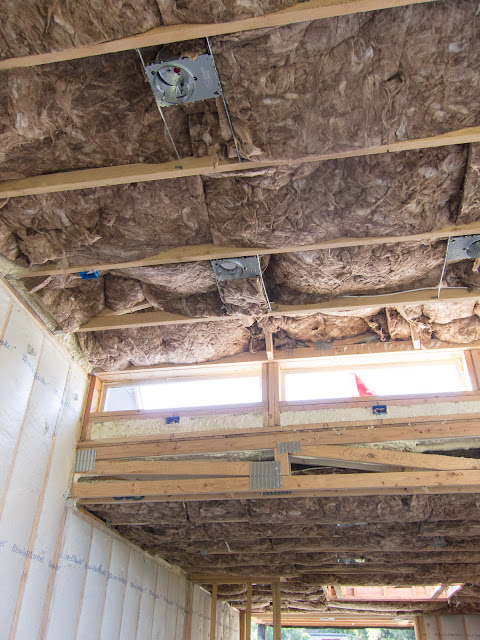- fiberglass - by far the most common and cheapest
- blown-in cellulose - this is where, with the use of a special machine, one fills all the cavities between the studs with a loose-fill cellulose fiber insulation. The benefit this provides over fiberglass is that it behaves more like a liquid during installation. It fills in all the gaps that might be left with fiberglass batting, has greater thermal mass, and is easy to manufacture
- open-cell foam - this is a type of spray-on foam. It does not provide air or water-tightness, but is easier to apply as closed-cell foam.
- closed-cell foam - this is by far the best and most expensive type of insulation I came across. Similar to the open-cell insulation, a polymer liquid is sprayed onto the walls, and it expands as it cures. This type of foam provides very high R-values as well as creates an air and water-tight seal against whatever surface it covers
In order to get the most benefit out of the properties of the different materials and to save cost, I went with a hybrid approach. All ceilings were sprayed with a 1" layer of closed-cell foam, then the rest covered in fiberglass batting. That gives the benefits of the air-tightness of the foam and saves costs. The 2nd and 3rd floor walls were all given a blow-in cellulose treatment.
 |
| Blow-in insulation on walls and closed-cell foam on ceilings |
 |
| The rafters get filled in with fiberglass |
Lastly, there was a bit of an error made in the planning of the downstairs area. Downstairs, much of the the concrete walls are exposed and insulated from the outside of the house. Unfortunately, the city inspector didn't like that there was a section of wall near the top that is not insulated from either side of the house. In order to keep the proper look of the house from the outside, I decided that the downstairs area walls should be framed out and insulated. I lost about 6" from the room, but I don't think it will be noticed.





